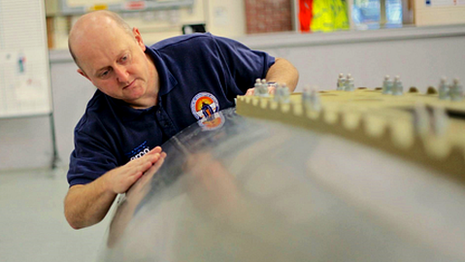Bloodhound Diary: How flat is flat?
- Published
A British team is developing a car that will be capable of reaching 1,000mph (1,610km/h). Powered by a rocket bolted to a Eurofighter-Typhoon jet engine, the vehicle will mount an assault on the world land speed record. Bloodhound, external will be run on Hakskeen Pan in Northern Cape, South Africa, in 2016.
Wing Commander Andy Green, the current world land-speed record holder, is writing a diary for BBC News about his experiences working on the Bloodhound project and the team's efforts to inspire national interest in science and engineering.
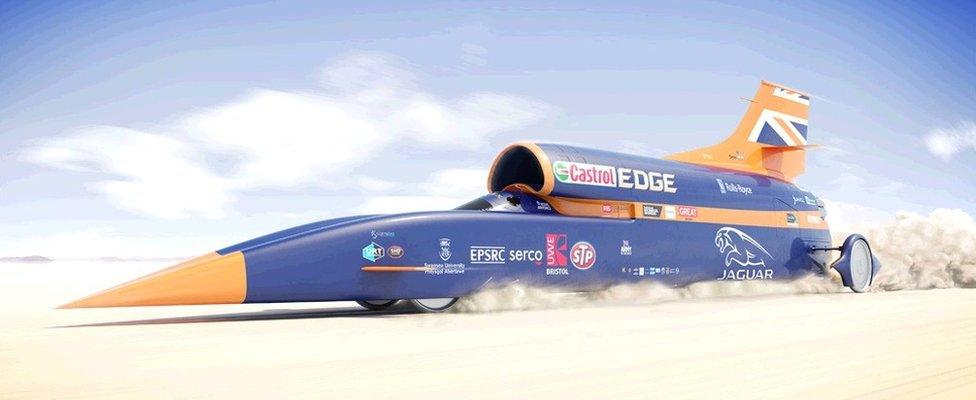
In reality, Bloodhound's track will be a slightly rough, irregular and undulating surface
Running a land speed record car should be easy. Find a perfectly flat surface and then all you have to worry about is the aerodynamics of the vehicle.
This simplifies the design hugely - in theory, you don't even need suspension, as the wheels won't have to cope with any bumps or dips.
However, in reality, things are not quite this simple. There is no such thing as a perfectly flat surface, anywhere.
The closest we can get to "flat" and large enough (12-plus miles for Bloodhound SSC) is a dried lakebed surface, which is water-laid and floods regularly (ideally every year) to keep it in prime condition.
This ideal lakebed surface will have a very smooth surface, but it will not be "flat".
The world is a large, nearly spherical ball, so the lakebed surface will be slightly curved.
Local gravity will vary slightly, depending on sub-surface rock formations, etc, and during the flooded periods, the water will try to follow these local variations, giving slight undulations in the dried lakebed surface.
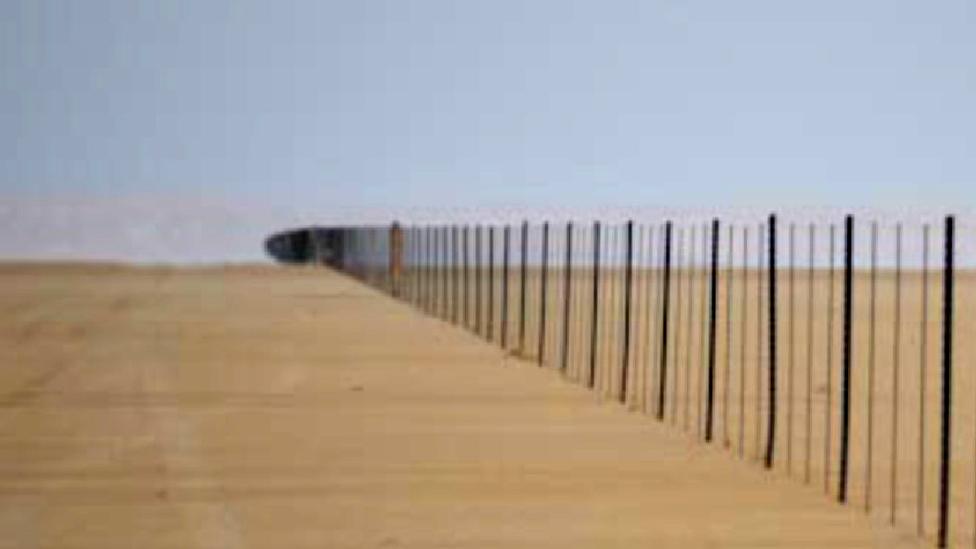
Look closely and you can see the curve
During the wet seasons, local rivers flood the lakebed, bringing fine silt and sediment in with the floodwater.
These sediments are likely to "pile up" is some areas more than others, giving further bumps and hollows. Then there's the unevenness caused by local rainfall: the rainy season in the Northern Cape is in their summer, with most of the rain from huge showers and thunderstorms, so it can be very intense and very localised, flooding different areas of the lakebed at different times.
The result of all these factors is that the surface may look perfectly "flat" to the naked eye, but it's really a slightly rough, irregular and undulating surface, which approximately follows an equipotential gravity surface on the surface of the Earth.
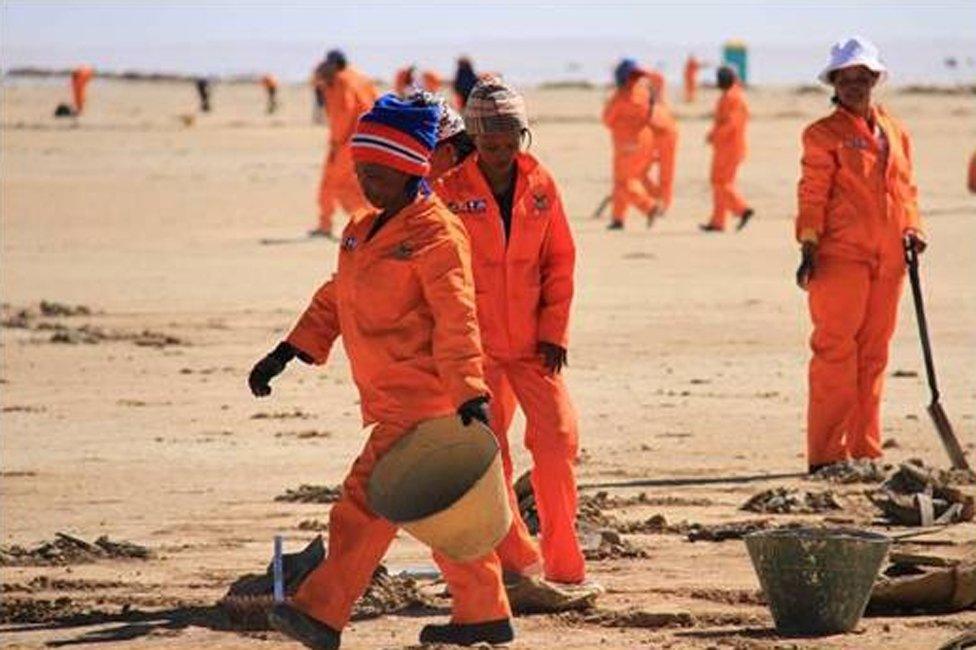
Moving 16,000 tonnes by hand
The bad news doesn't end there. A very large dry lakebed is likely to form a short cut for the local population during the dry season, leaving wheel ruts across the surface.
In addition, the surface may be covered in stones that have been washed in over thousands of years - this is certainly true for Hakskeen Pan, where the Northern Cape team has removed over 16,000 tonnes of stones, by hand, external.
All of this adds to the roughness and irregularity of our supposedly flat desert surface.
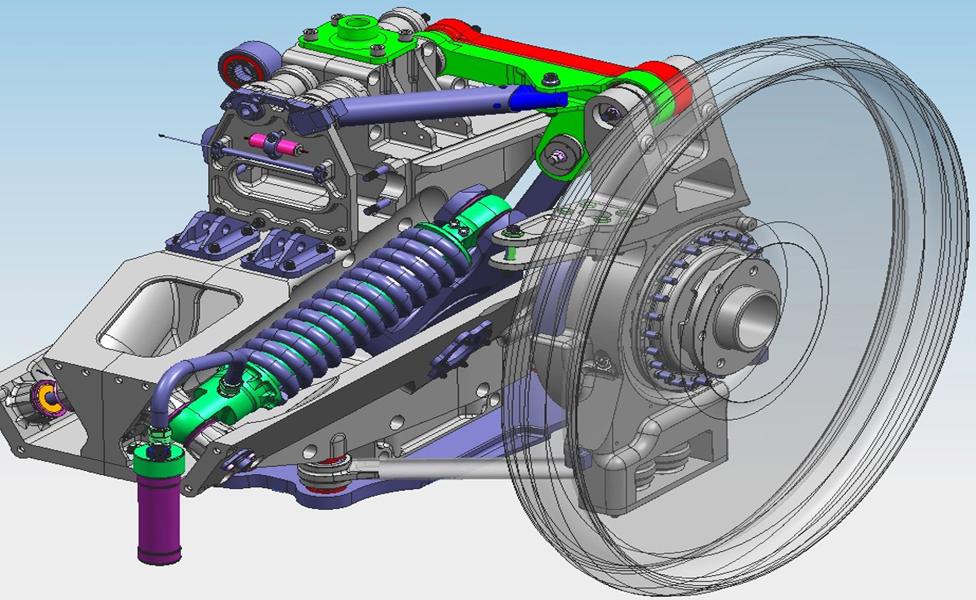
Good suspension is a must
Two simple conclusions follow from the above description. The first is that our land speed record car is likely to fare much better if it's got some good suspension to cope with the surface bumps and dips.
This is why Bloodhound SSC has independent double-wishbone suspension on all four wheels.
The other thing we need to know is what the suspension will have to cope with. In other words, just how "rough" is this desert surface?
I first put this question to a small survey company in Cape Town called Lloyd & Hill, five years ago.
Thanks to a huge amount of work by Gavin Lloyd and his team since then, we now have the most detailed map ever of a land speed record track.
The answer to our "how rough?" question is that the Hakskeen Pan surface appears to be smooth enough for a 1,000mph land speed record attempt.
This simple statement is based on what is, we believe, the world's largest precise survey of a natural surface.
The task we set for Gavin and his team was to scan the whole of our 20km by 500m-wide track surface, measuring the elevation (height) in each square metre, to an accuracy of 10mm or less. That's 10 million precision measured points, just for the main track surface (the safety zones either side were also scanned, which doubled the task).
It's fairly easy to measure one point accurately, or even several (surveyors do it all the time), but 10 million points spread over 10 million sq m? That's not practical… until now.
New laser scanning technology (and some very clever work by Lloyd & Hill) made it happen for us.
To reduce the task slightly, we decided to ignore the first 3km of track at the northern end (which is very smooth) and the last km of the southern end, where Bloodhound SSC will be travelling very slowly anyway. That still leaves us with 16km by 500m (a total of 8 million sq m) to scan.
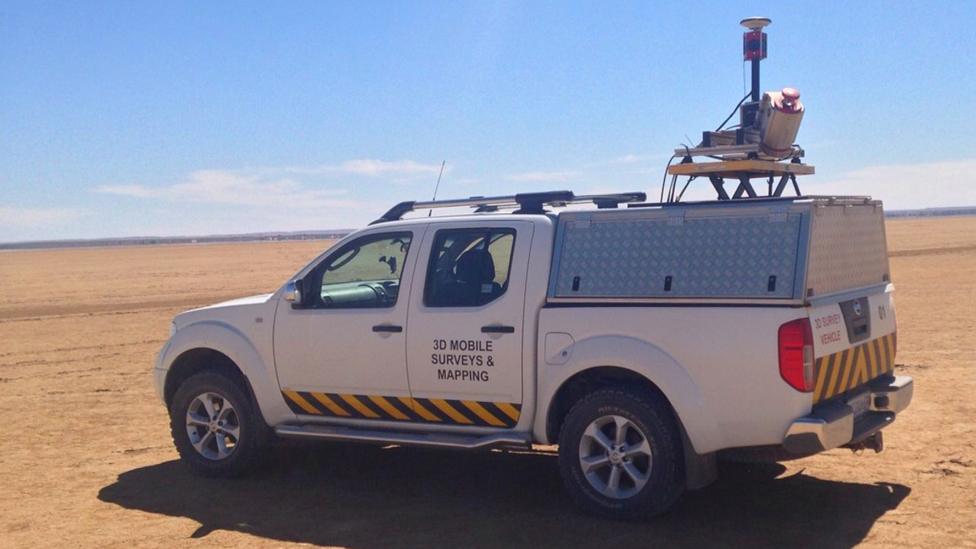
High-speed scanning...
The survey theory is simple. Put a very high speed scanning laser on top of a vehicle, drive it up and down the desert until you've scanned the whole track, crunch the resulting 3D surface map through a computer, and wait for the results to fall out.
Unfortunately, in the real world, it's nowhere near that easy.
The team mounted the laser head on top of a vehicle, which then drove up and down the lakebed for a total distance of 300km to map the whole track surface. Of course, the laser is only measuring the distance from the surface to the laser head, which moves as the vehicle moves up and down, and rolls from side to side, on its suspension.
Even if you use a computer to compensate for the suspension movement, that still leaves you with the problem of knowing precisely where the vehicle is (to a vertical accuracy of less than 10 mm) all the time.
The solution is to pre-survey 290 precise reference points, spread over the whole track and accurate to +/-2mm, so that the laser map can be matched precisely to these known elevation points.
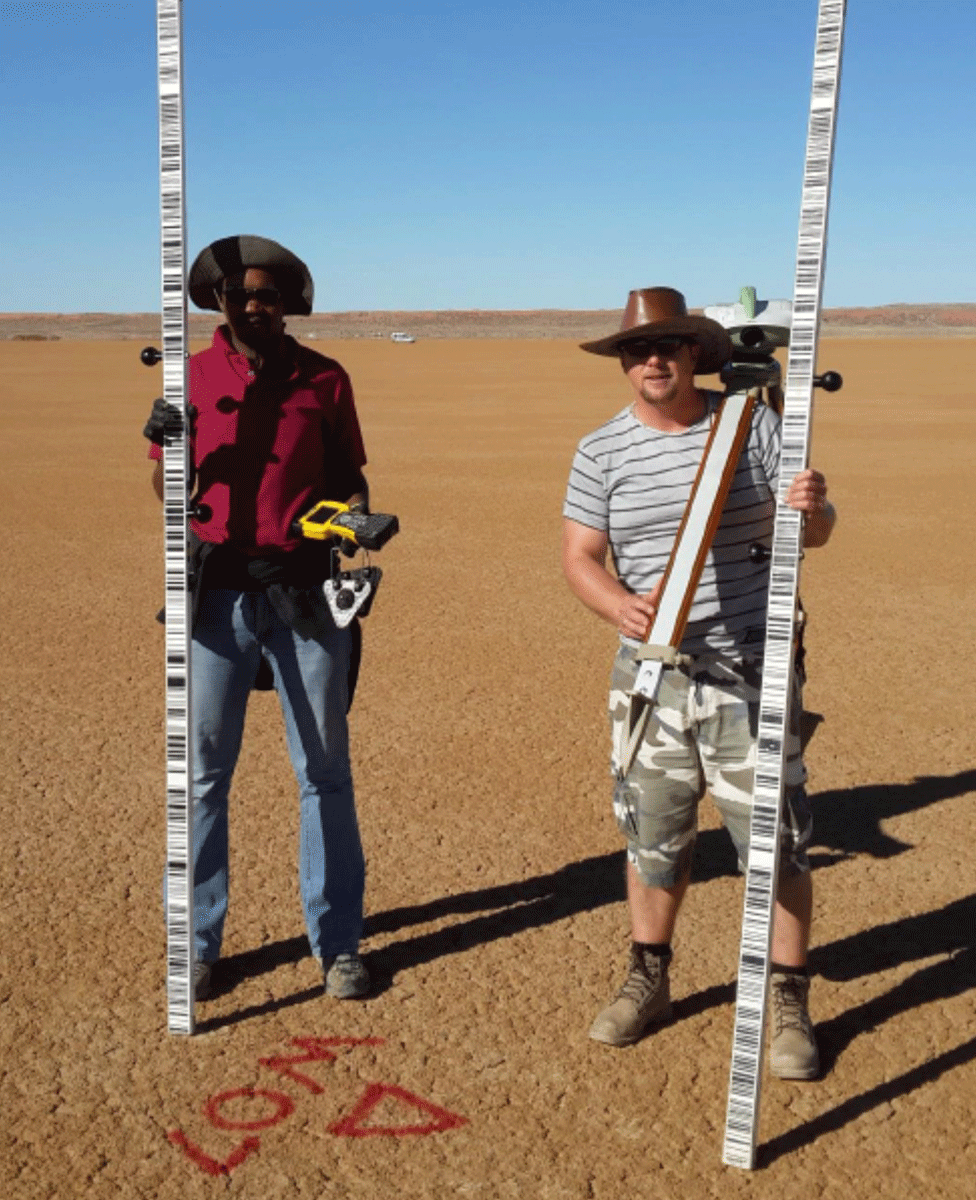
…and 290 reference points
The other problem with a vehicle on a desert is that it's on wheels, which kick up a plume of desert dust, even driving slowly.
This gave the laser system its biggest problem. The dust blocks the laser signal reaching the surface behind the vehicle, and gives false returns from the dust cloud instead.
The laser scanner uses a sophisticated technology called "full wave form analysis", which stores multiple returns from the initial pulse. However, the dust cloud was often too dense for this technology to achieve a true "last return" from the surface.
To deal with this, the team filtered out the signals immediately behind the moving vehicle.
So much for sorting out the problems of scanning from a vehicle. That still leaves the problem of the varying types of desert surface. Depending on the local soil conditions and the rainfall pattern, the surface may be super-smooth, cracked, crumbly, or some combination of all three.
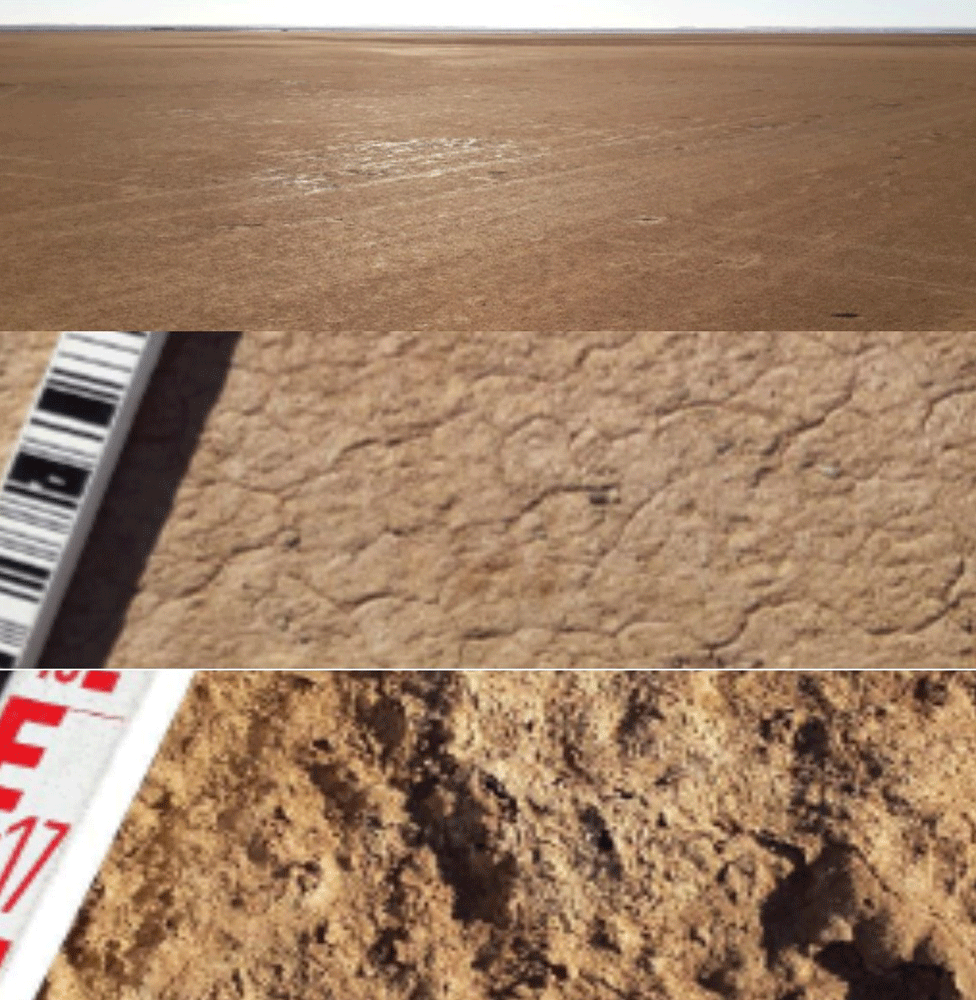
Smooth, cracked or crumbly – take your pick
These surface changes make no difference to a 7-tonne supersonic car, but they can have a big effect on what the survey laser sees at any one point.
To get round this, each square metre was scanned at 500+ different points, and then averaged to produce a single elevation for that square metre. In other words, for the scanned track area of 8 million sq m, the team sampled over four billion points with the scanning laser.
So, four billion points later, what does the world's most precise surface survey show us?
The good news is that across the whole surface, the biggest "bumps" and "dips" are less than 50mm from the average elevation. Plotting the vertical differences from the surrounding area, and colour-coding the result, clearly shows the ridges and ruts across this apparently flat surface.
The most obvious changes are at the old causeway, which ran across the northern end of the track.
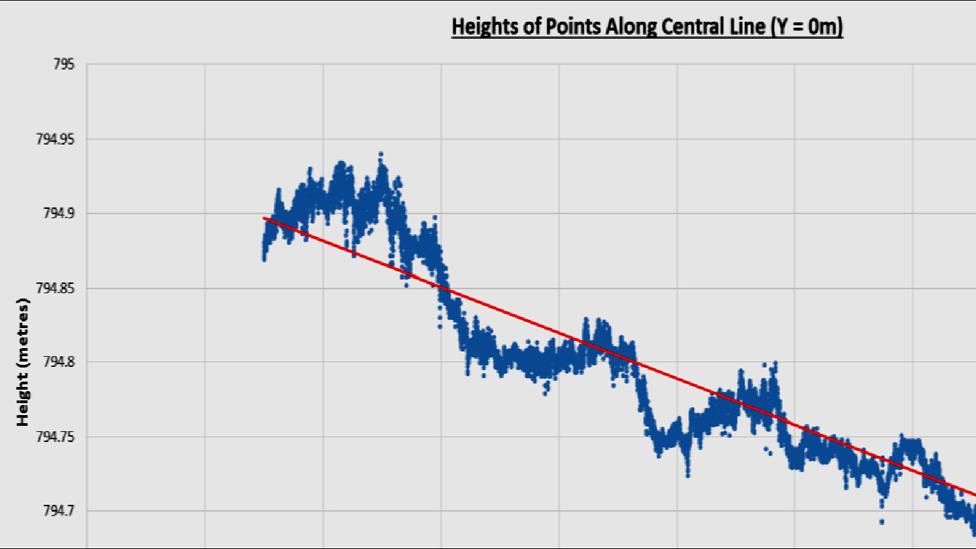
One foot in 10 miles
The initial results gave us some surprises. Hakskeen Pan has a very gentle slope from north to south. By gentle slope, I mean 300mm in 16km (about one foot in 10 miles), so we could regard it as perfectly level.
The rainfall doesn't pool at the southern end, showing that even the water regards this surface as level - surface friction and the wind have far more effect than the tiny north-south slope.
Another surprise was what looks like a big "step" running across the Pan, just over 9km from the northern end of the track.
This caught my attention: the measured mile starts at that point, so the car will be travelling at 1,000mph right there.
Time to look at the details and try to answer the original question of "how rough?" is the car and the suspension going to find this.

The detailed profile
The step is larger at the western side of the track, with an elevation change of about 80mm in a distance of 180m.
That's a slope of 0.026 degrees. It's nothing… unless you're doing 450m/s, when the car will drive up this step in just 0.4 of a second.
That's going to make the suspension, and the car, move a long way in a short time. 78mm is a long way in 0.4s… or is it?
I've built a very basic model of the suspension, to look at the peak loads (this is one of those times when it's really useful to be a mathematician).
This apparently large step results in a bump of less than half a g, and if you add the effect of the car's suspension dampers (which smooth the bumps out), this drops to under a quarter of a g.
The suspension is designed to cope with up to 4g (up to four times the car's weight), so a quarter of a g is hardly worth mentioning.

Suspension Modelling - fancy a go?
Slightly more interesting is the series of bumps and dips around the causeway.
We're still analysing the data, but I can't find anything that gives us more than about 1-1.5g, so everything looks to be well within the car's comfort zone.
There's plenty more data to look at, though. So, if you've got a background in suspension modelling (or a university student looking for a project) then please do get in touch - we've got a unique piece of research for you to get your teeth into!
- Published25 July 2015
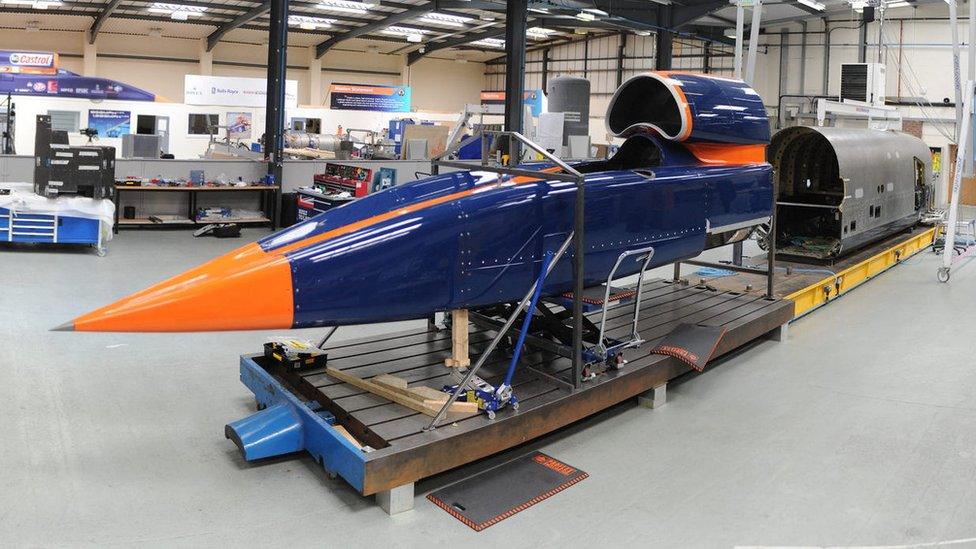
- Published7 July 2015
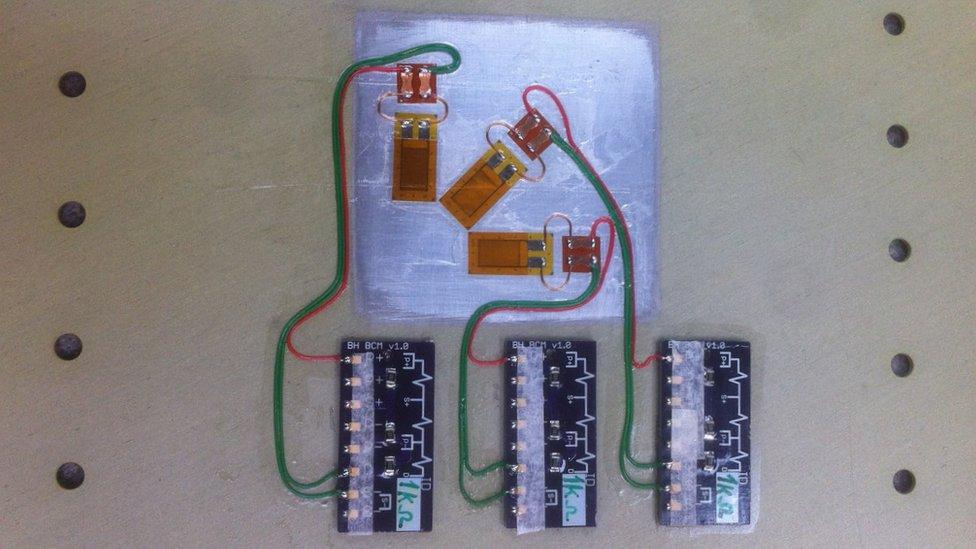
- Published12 June 2015
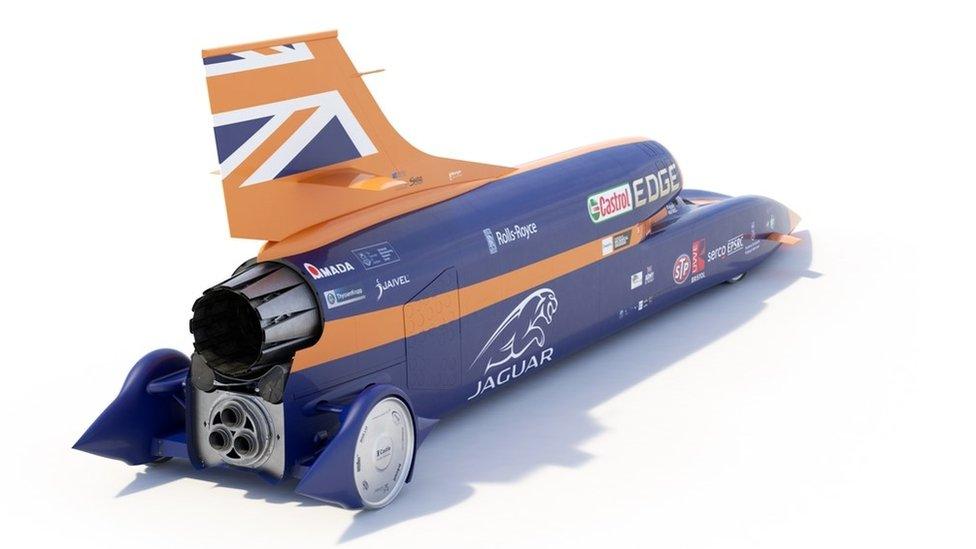
- Published10 June 2015
- Published3 June 2015
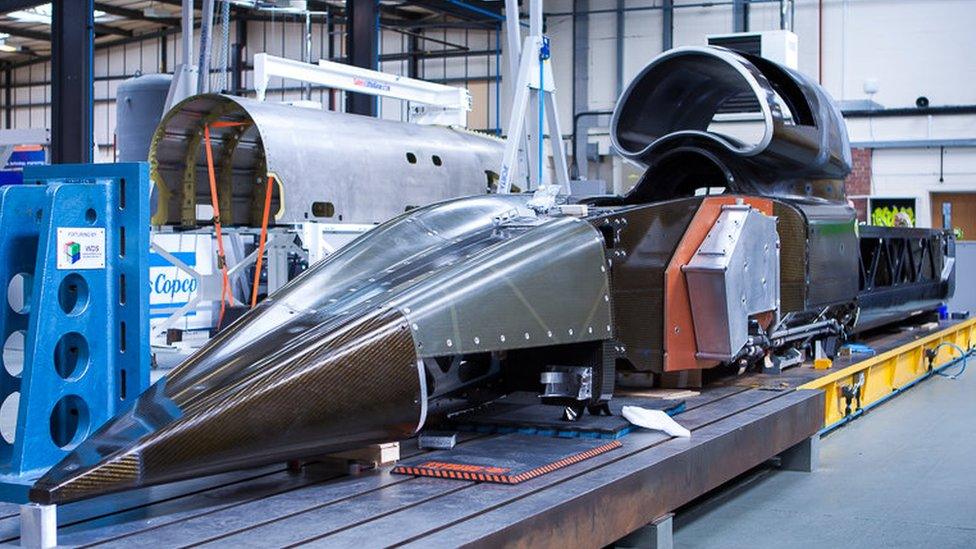
- Published19 May 2015
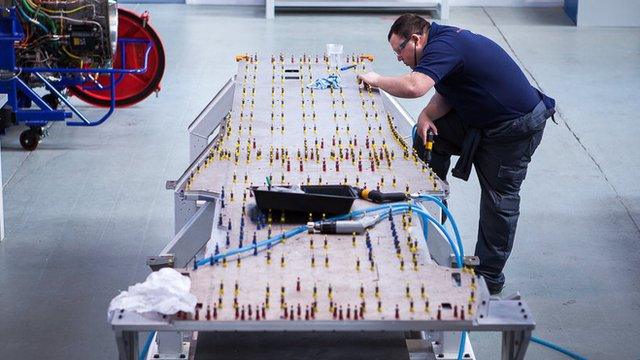
- Published7 May 2015
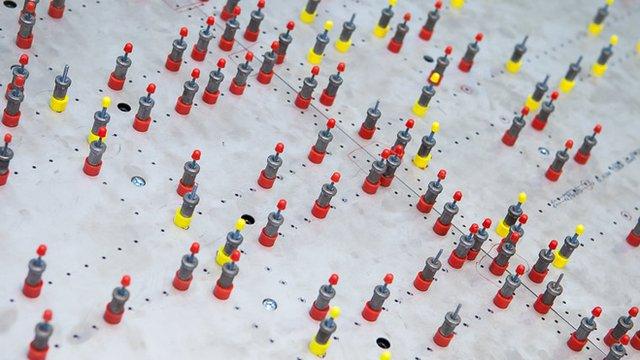
- Published28 April 2015
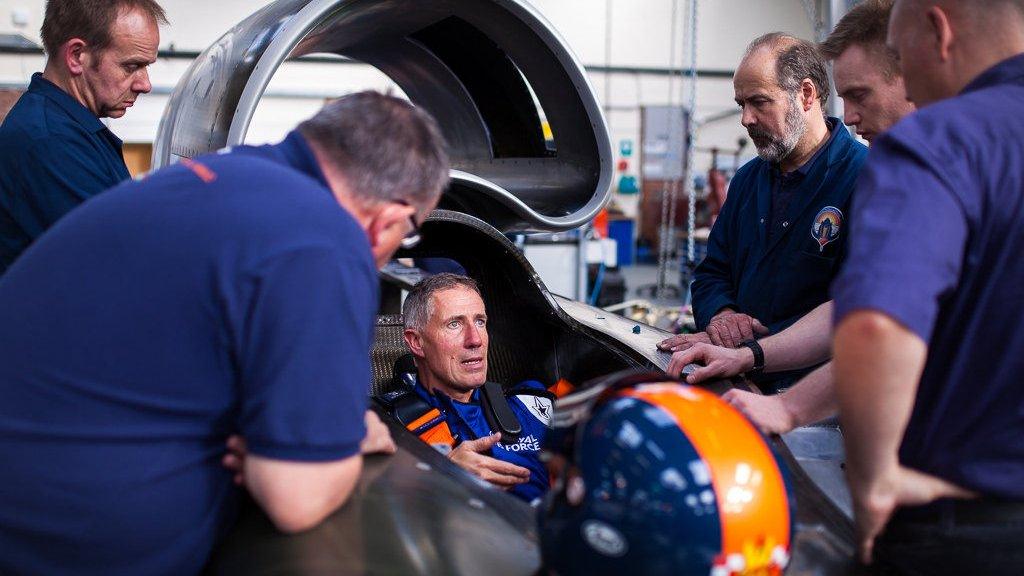
- Published2 April 2015
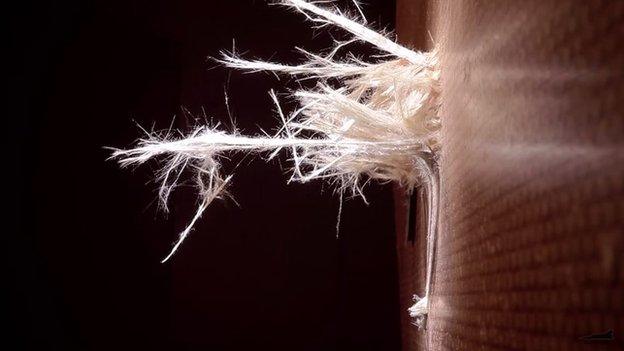
- Published25 March 2015
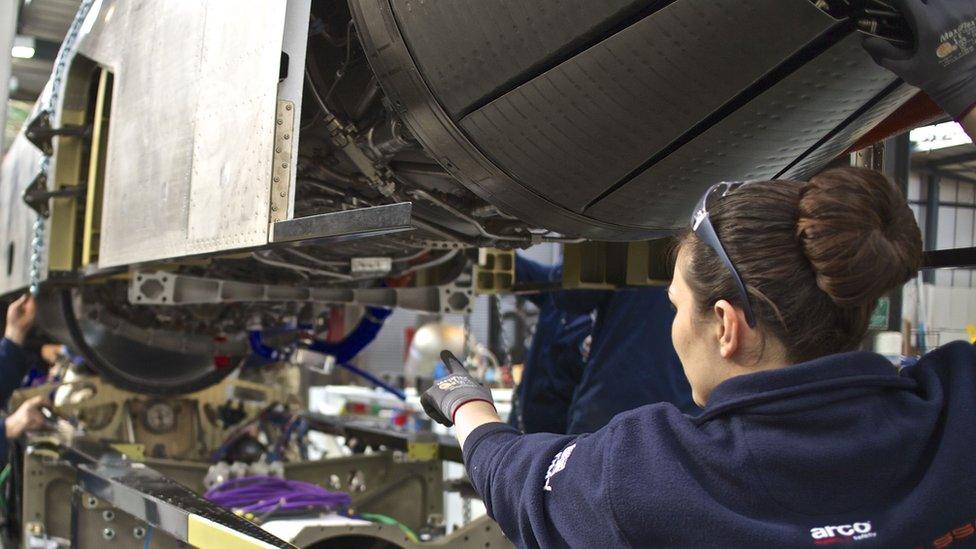
- Published14 March 2015
- Published6 March 2015
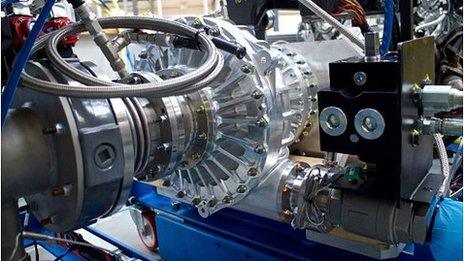
- Published2 March 2015
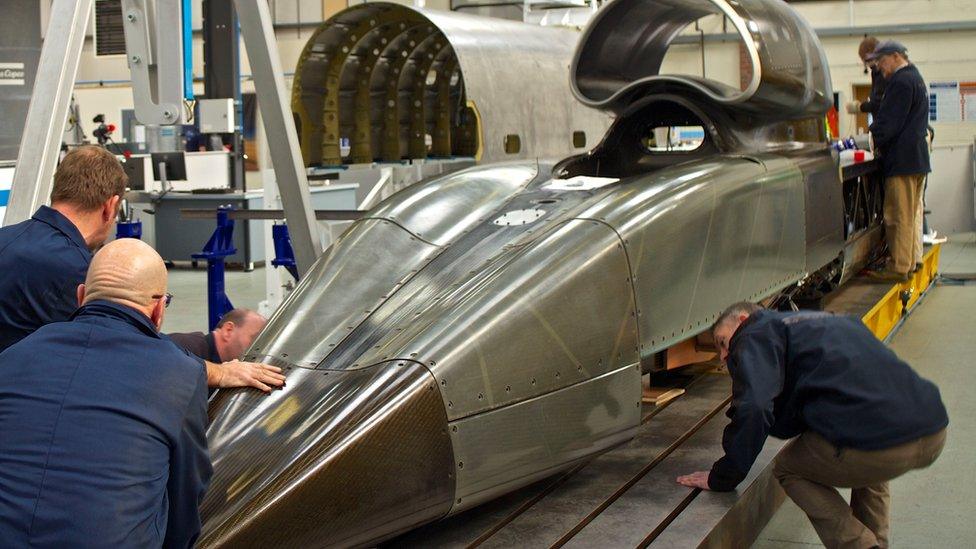
- Published3 February 2015
